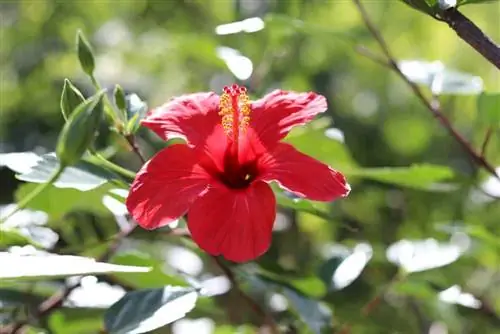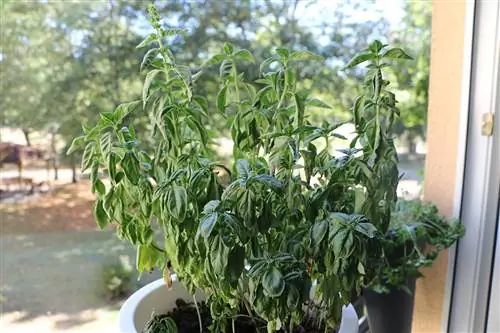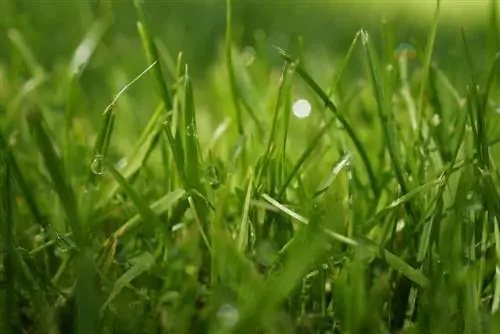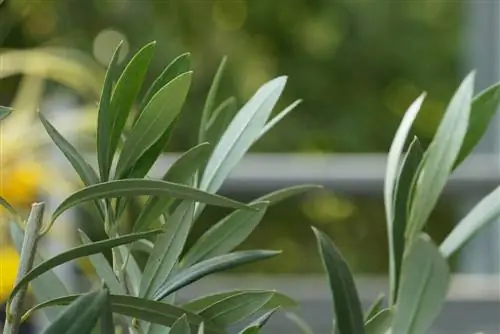- Author admin [email protected].
- Public 2023-12-17 03:39.
- Last modified 2025-01-24 12:45.
Behind the fairytale abundance of flowers of a hibiscus lies an unexpectedly robust constitution that allows for uncomplicated overwintering. The feudal genus of the mallow family gives us both hardy and frost-sensitive marshmallow species, which accompany us through the summer with their picturesque flowers. If the origin and exact type of plant are known, you can easily take the right precautions for the cold season. These 7 tips provide a practical explanation of how the exotic floral wonder survives the winter as a garden shrub, indoor plant and perennial.
Provide young marshmallows with cold protection
The magnificent varieties of Hibiscus syriacus are highly valued as summer-flowering garden shrubs. Thanks to a robust winter hardiness of up to -20 degrees Celsius, every hibiscus of this botanical classification can be planted in the bed and transform the garden into a summer flower fairytale for many years. Since frost resistance gradually builds up, young plants rely on winter protection during a three to four year start-up phase. With these precautions you will do it right:
- In late autumn, pile up a thick layer of autumn leaves on the root disk
- Fix the leaves with brushwood or pine fronds
- Protect the young shoots with reed mats in wind-exposed locations
- Remove the cold protection in the spring in good time before budding
If winter temperatures in the garden generally do not fall below -20 degrees Celsius, these measures can be dispensed with after the construction phase. The winter-hardy varieties of hibiscus can now stand up to bitter frost on their own.
Marshmallow in a pot never without a winter coat
Its robust winter hardiness of up to -20 degrees Celsius is only an advantage for a garden hibiscus when planted out in a bed. If you cultivate the floral gem in a pot, you will have to accept significant losses in this regard. The root ball is surrounded by a smaller volume of soil and does not receive any actual protection from frost from the vessel walls. The greatest stress in the pot is the constant changes between freezing and thawing weather, which tug on the cell walls in the plant tissue so much that they can tear. With a winter coat you can protect your hibiscus from the hardships of winter. This is how it works:
- Put hibiscus in a pot in front of the south wall of the house before the onset of winter
- Cover the plant container with several layers of jute, fleece or foil
- Place some wooden slats or polystyrene plates under the pot
- Pile leaves, straw or bark mulch on the substrate
Finally, cover the bucket with a mat made of coconut, raffia or reed that extends 10 to 15 cm beyond the edge. With this bulwark against severe frost you can arm your hibiscus every year, as it cannot rely on its winter hardiness when grown in pots, even at an advanced age.
Sunny, nutrient-rich location optimizes winter hardiness

So that the garden marshmallow (Hibiscus syriacus) can rely on its winter hardiness, its growth must not be weakened. Successful wintering therefore begins with the choice of location. The best growth is guaranteed in these locations:
- Sunny to shady location
- Protected from wind and rain in front of a house wall or under a canopy
- Nutritious, loose and deep soil
- Fresh to moist without waterlogging
So that a hibiscus can establish itself well in the location until winter, spring is the ideal planting time. In order to provide the fleshy heart root system with enough space for vital growth, please dig a spacious planting pit with twice the volume of the root ball.
Overwinter indoor hibiscus in a cool and sunny place
The silky calyxes and evergreen leaves of Hibiscus rosa-sinensis create a glamorous ambience in living rooms and winter gardens. Since the Chinese rose marshmallow is native to warm tropical regions, it shudders at temperatures of around 10 degrees Celsius. Theoretically, the exotic sun worshiper can stay at his usual location behind glass all year round. However, it is more beneficial for lavish flowers and a long life to spend the winter in a cool place so that the indoor hibiscus can gather fresh strength. This is how it survives the dark season without any damage:
- Spend from October to February in a bright, slightly temperate room
- Ideal temperatures are between 12 and 16 degrees Celsius
- Shade on the south window and in the winter garden when the sun is shining
The rose marshmallow also moves into the winter quarters recommended here when it decorates the sunny balcony with its furious display of flowers from May to September. Please put away your summer cooler at the latest when the nighttime temperatures approach the 10 degree mark.
Water the evergreen rose marshmallow little in winter and do not fertilize
If your indoor hibiscus is granted a cool and bright break in winter, the care will be modified accordingly. Now water the plant every 2 to 3 weeks with lime-free water so that the root ball does not dry out. Please do not apply fertilizer between October and February.
If you prefer overwintering in a warm living space, more frequent watering is necessary due to the higher evaporation. In addition, you continue to supply nutrients at extended intervals. Every 4 to 6 weeks, add low-lime liquid fertilizer to the irrigation water to compensate for energy consumption during a warm winter.
Increased humidity keeps pests away
In the winter quarters, spider mites, mealybugs and mealybugs lurk on the evergreen leaves in order to extract the plant sap from them. There is an increased risk of infestation under the influence of dry heating air. By increasing the humidity in the room with the following precautions, you can keep sucking pests away from your hibiscus. This is how it works:
- Spray the tops and bottoms of the leaves every few days with soft water
- Attach water-filled humidifiers to radiators in heated rooms
- Alternatively, set up a standard humidifier in the immediate vicinity of the hibiscus
Please inspect the leaves closely for pests every 2 days. With a magnifying glass, the tiny pests can be discovered at an early stage of infestation and can be combated with home remedies, such as soft soap solution.
Cut perennial hibiscus close to the ground in autumn
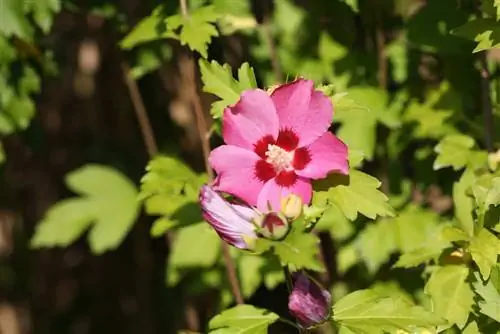
The cultivated forms of Hibiscus x moscheutos, which thrive as herbaceous perennials, are a talking point among hibiscus lovers. With impressive flowers up to 30 cm in diameter and a height of 120 to 200 cm, the decorative perennials are in no way inferior to the flowering bushes in terms of beauty. They even significantly exceed the winter hardiness of the garden hibiscus with temperatures of up to -30 degrees Celsius. This is how you can easily overwinter a perennial hibiscus in the bed:
- In late autumn, cut off all shoots just above the ground
- Protect the root disk from excess moisture with a layer of leaves
- Clear the soil in March so as not to hinder sprouting
- Place the bucket on wood and cover it with bubble wrap
Just in time with the start of the warm season, rapid shoots begin from the overwintered rootstock. An organic fertilizer gives additional growth momentum at the end of the winter period.
Conclusion
No plant lover has to miss out on the furious flower rush of a hibiscus because they fear a laborious and complicated overwintering process. It will survive the winter in the garden and as a houseplant without any injuries if these 7 tips are followed. When young and in a pot, the garden marshmallow is protected against frost with just a few precautions, as it can build up a natural winter hardiness of up to -20 degrees Celsius. If a sunny and protected location without waterlogging is chosen as the location, you can ensure successful wintering right from the time of planting. A bright, cool winter quarter is enough for the frost-sensitive indoor hibiscus to survive the strenuous time. Beginners to the hibiscus hobby will appreciate the decorative perennials Hibiscus x moscheutos, because overwintering here is limited to cutting back close to the ground in autumn.

